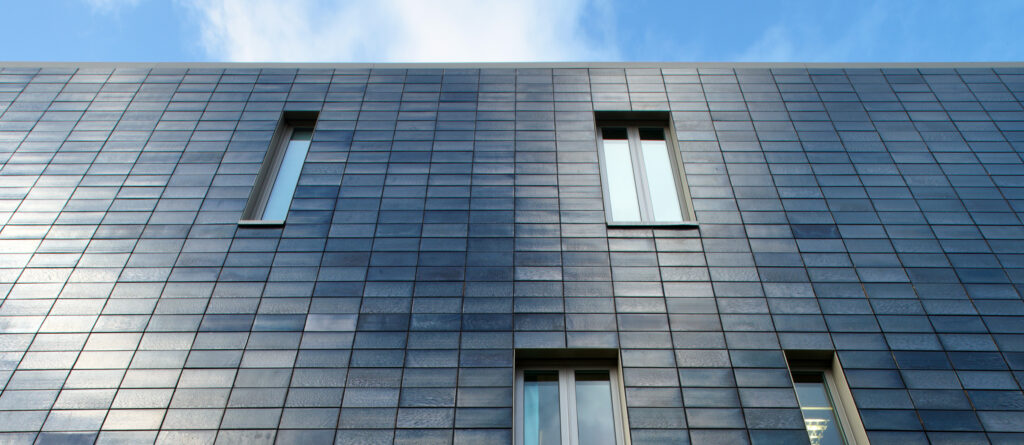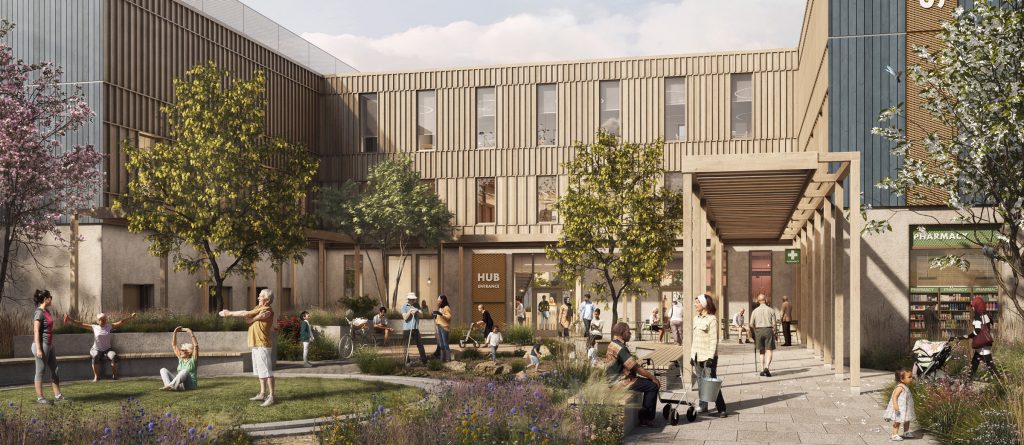
Neurodiversity and Autism
Tailored environments for neurodiversity informed by clinical research.
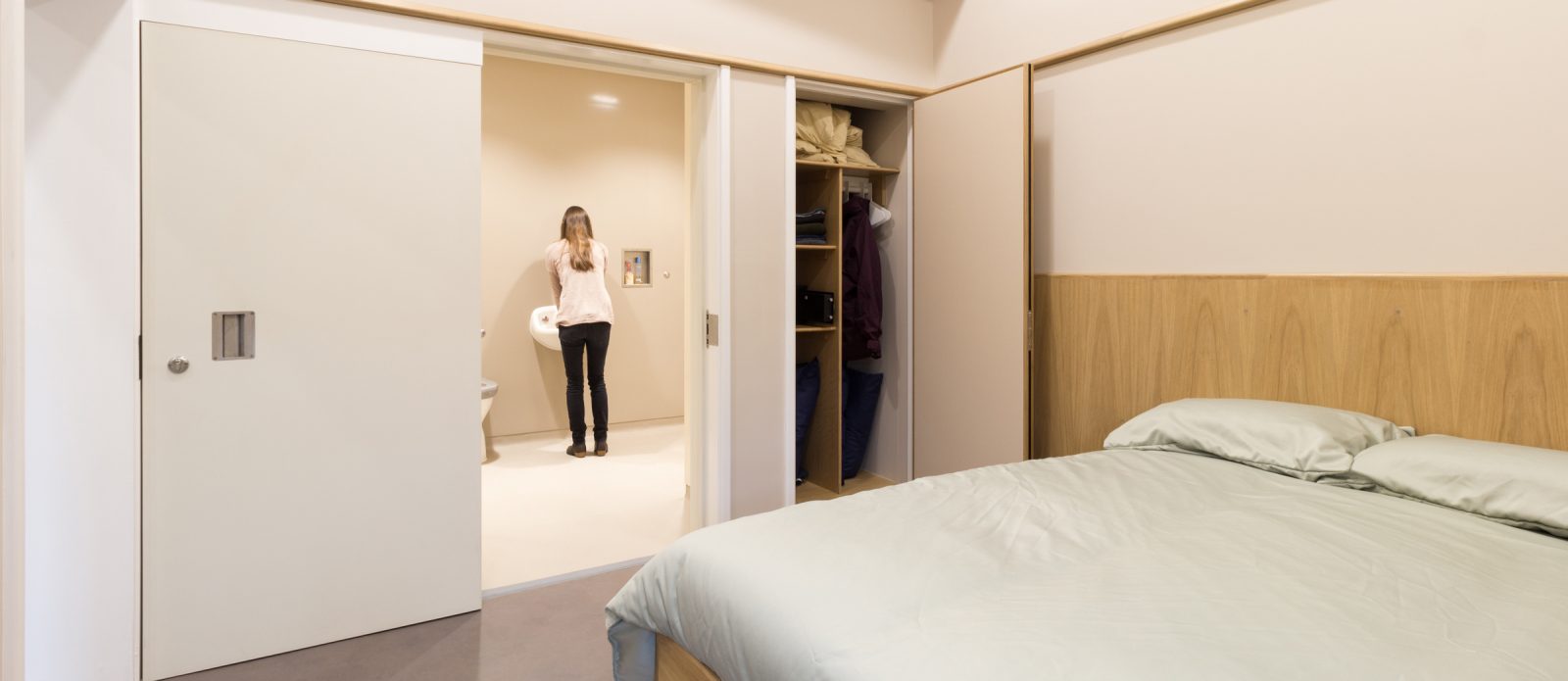
Evidence shows that the wellbeing of people with neurodiversity and autism spectrum disorders is influenced by the environment in which they are cared for. Well-designed facilities can reduce challenging behaviours, reducing distress to patients, healthcare staff and carers. Our knowledge gained from extensive research, and collaboration with specialist clinicians and the National Autistic Society, has informed our design of exemplar facilities for this complex patient group.
This new building provides one of the most tailored environments in the country for adults with an autism spectrum disorder.
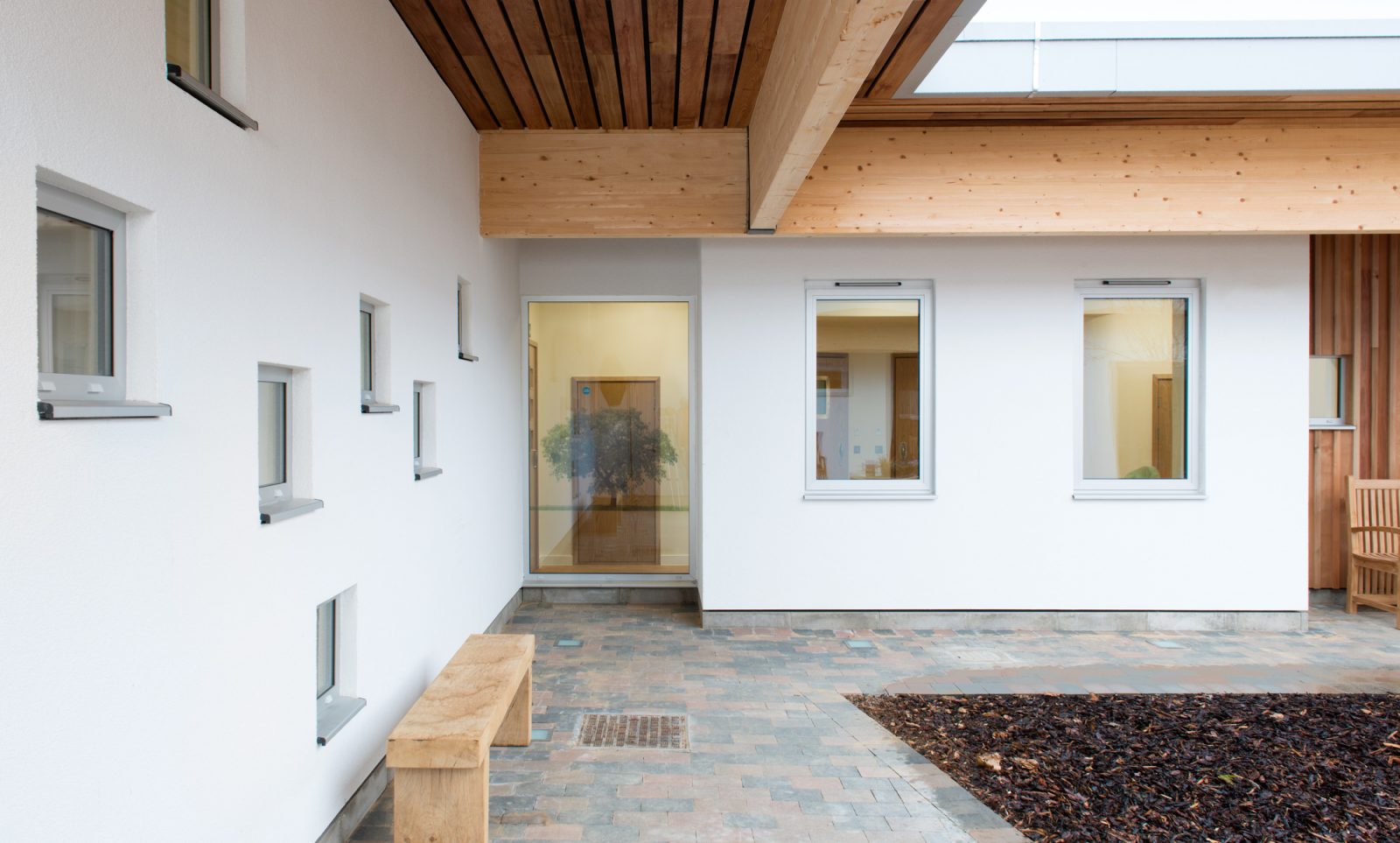
The courtyard at Oakwood Autism Unit where residents have autonomous access to outside space.
Planning spaces to reduce stress and anxiety
In designing for patients with neurodiversity and autism spectrum disorders, the careful planning of spaces is critical. Ward layouts with looped circulation provide an alternative route for patients and staff to back away from escalating situations. Patients may have difficulty engaging with outside space, so the transition from inside to outside needs to be well designed and gradual.
Active circulation spaces with informal seating provide places to rest and connect with other patients and members of staff. These spaces should be sufficiently wide to provide plenty of ‘breathing space’ and broken up in length visually to prevent anxiety as they are navigated. Curving walls can be used to make circulation spaces appear ‘softer’ and to encourage the flow of movement.
Oakwood is one the best examples of how care home services of this kind could and should be. We are already seeing residents interacting more than they ever have before.
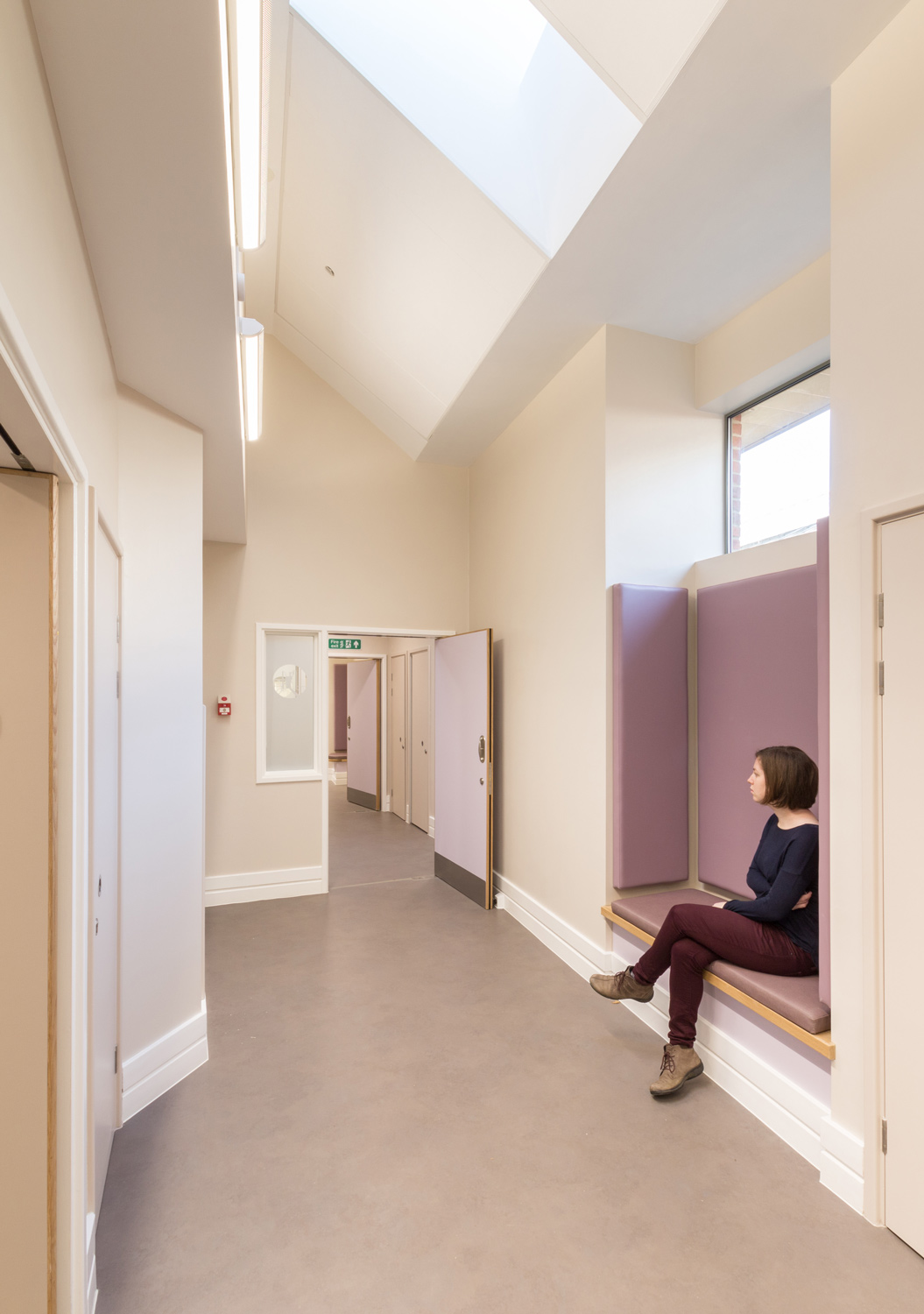
Informal seating in a circulation space at Mitford Adult Autism Unit.
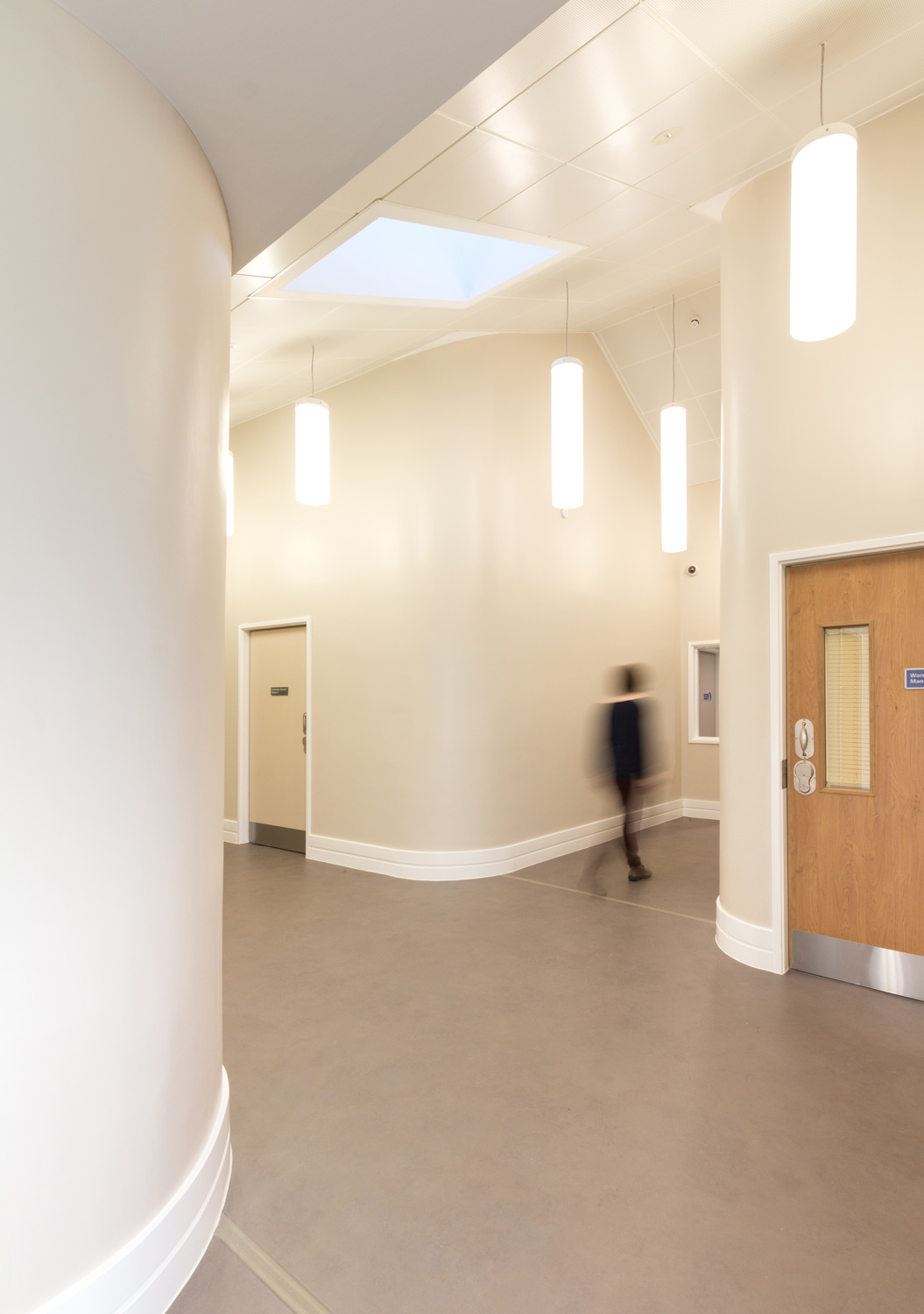
Curved walls and wide circulation spaces at Mitford Adult Autism Unit.
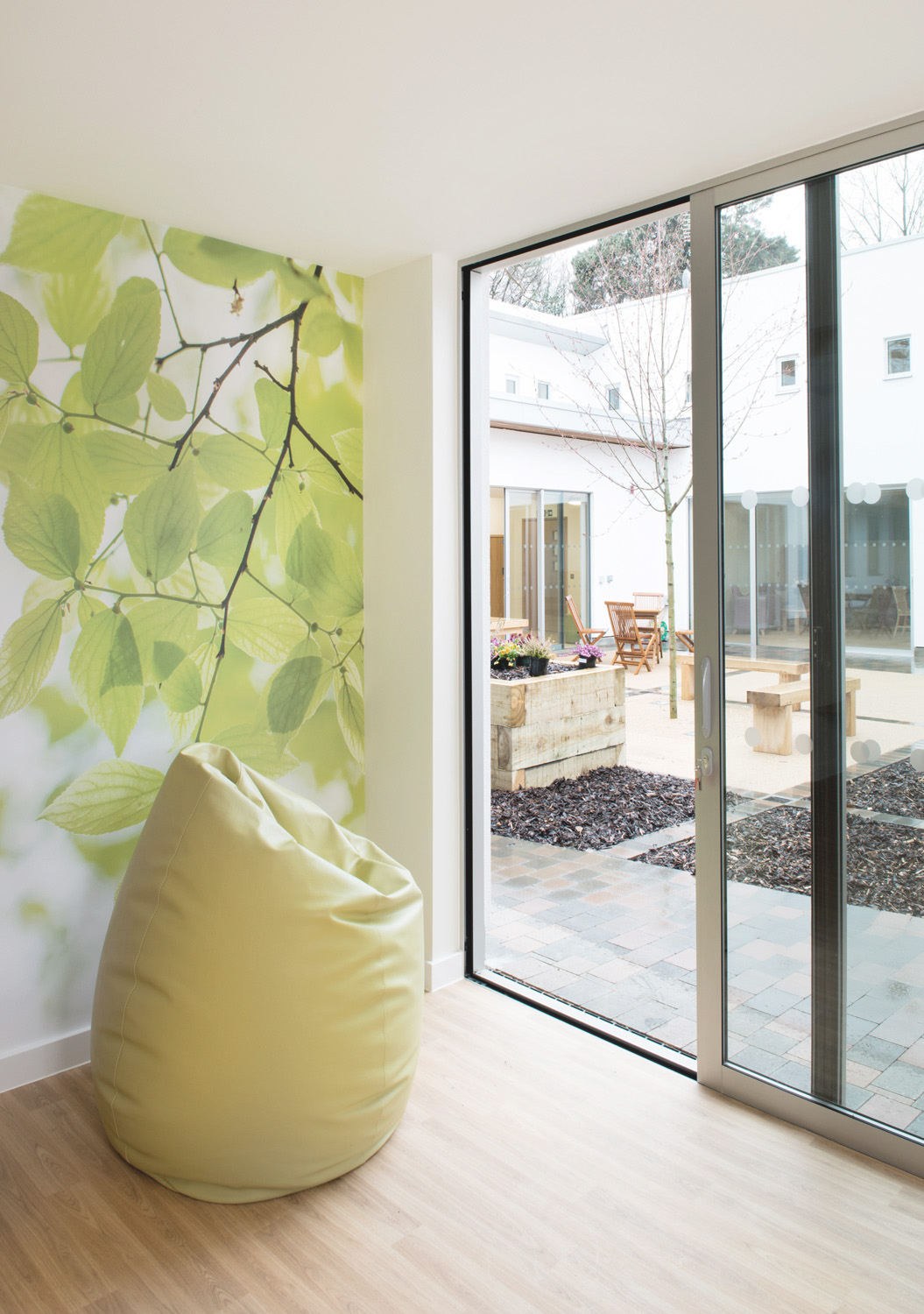
Gradual transition to outdoor space at Oakwood Autism Unit.
Coordinated details to avoid sensory overload
For building users who may have heightened sensitivity to their environment, seamless details, an overriding sense of calmness, and careful design coordination are essential to prevent sensory overload and to remove distracting focuses for repetitive behaviour. Consistent light levels and temperature, and well-considered acoustics create a balanced environment. High level windows provide light without uncomfortable glare, and small picture windows offer direct, framed views into the immediate or distant landscape, without providing excessive stimulus and feedback.
The building’s fire strategy must be developed early as it may be necessary to avoid an audible alarm to prevent panic or sensory overload. In this case, strategies to keep patients safe for longer periods of time than usually necessary will be critical.
We believe the collaborative approach of an integrated and committed project team, particularly in building upon clinical expertise, has created an innovative and world leading facility.
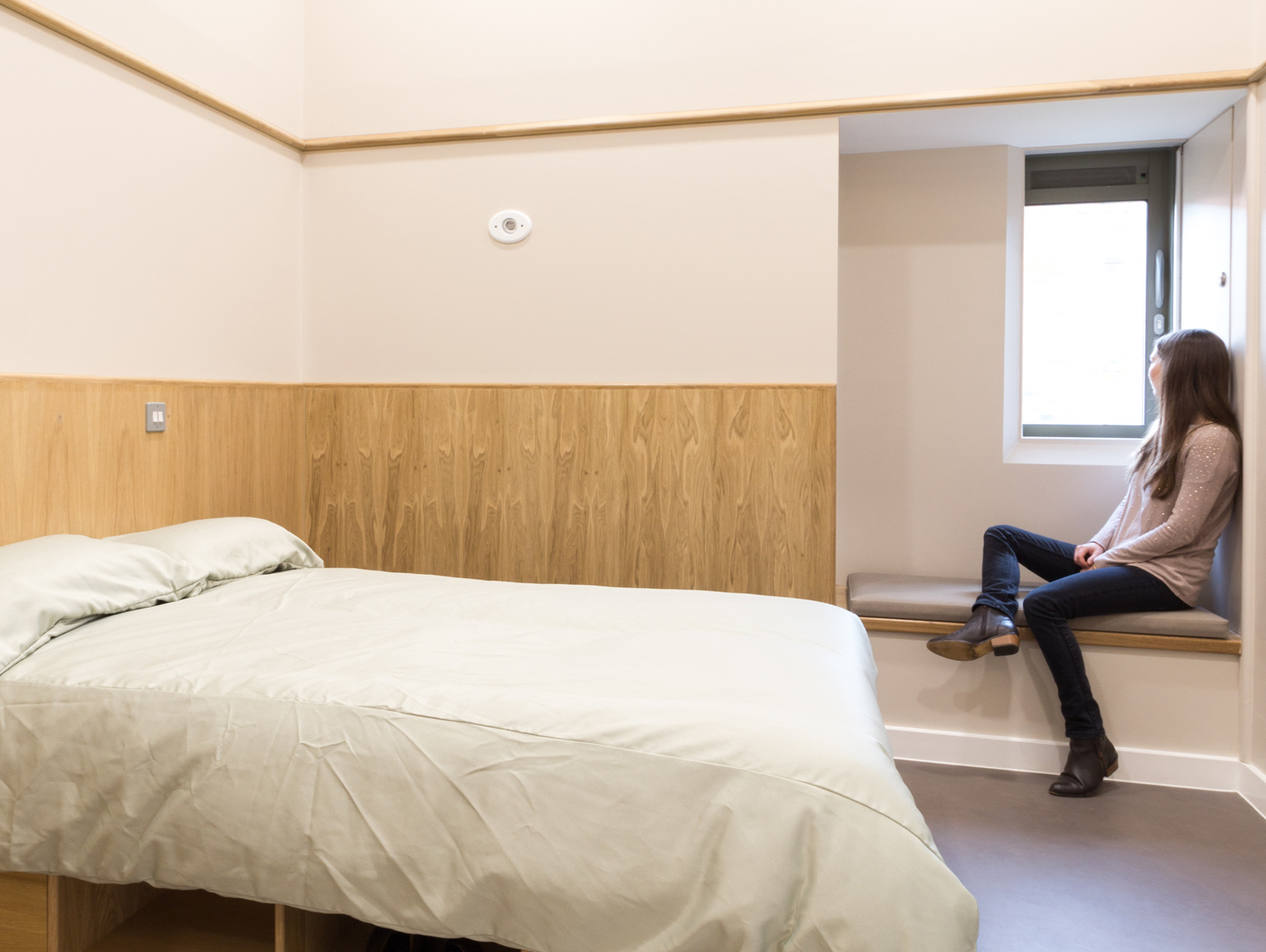
Small picture windows offering framed views to gardens at Mitford Adult Autism Unit.
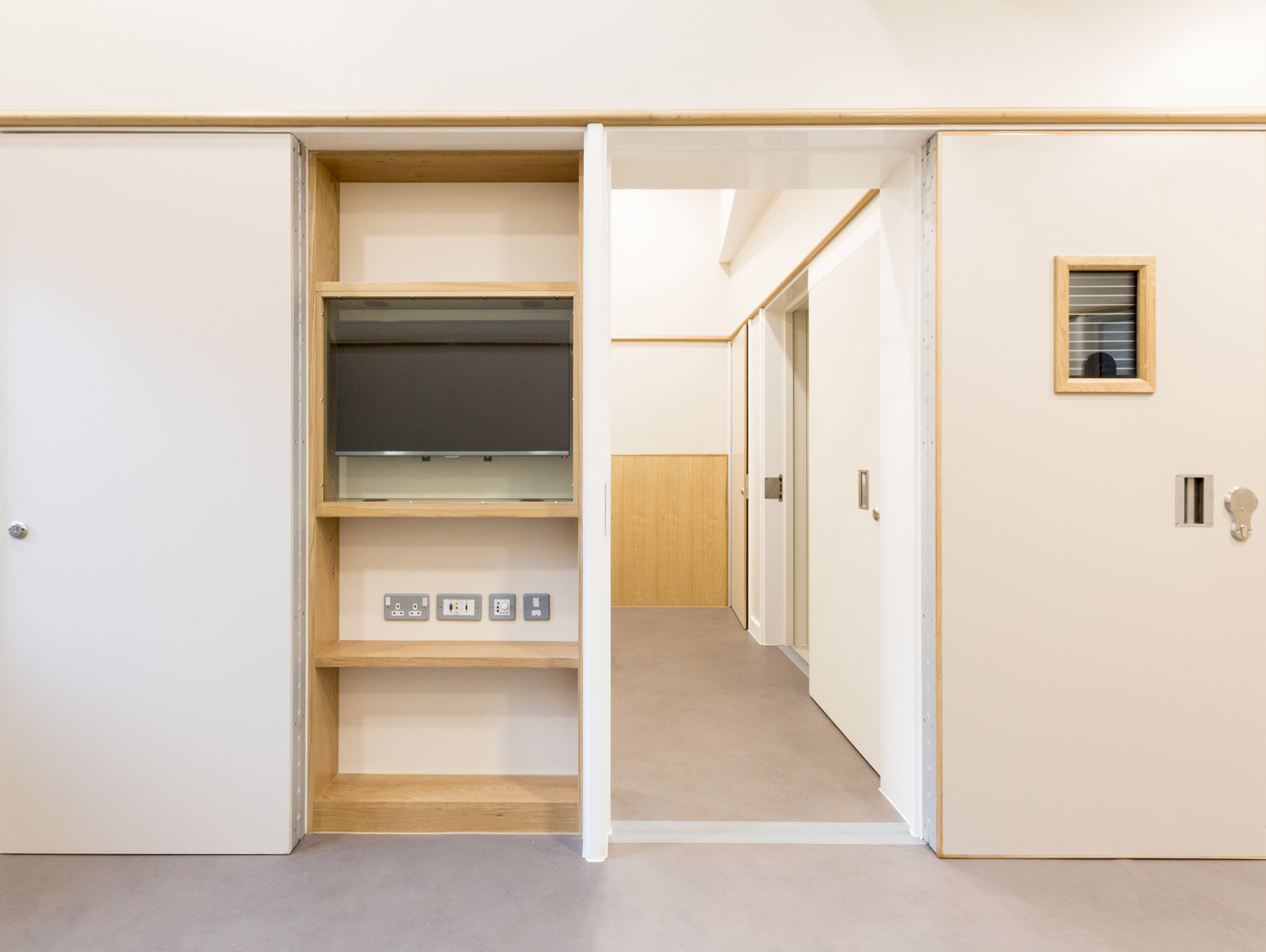
Carefully designed joinery at Mitford Adult Autism Unit allowing distracting focuses to be hidden when not in use.
Staff are witnessing huge impacts on quality of life. Seeing a mother reacting to her son having his first incident-free day in seven years is very rewarding.
Location:
Northumberland
Client:
Cumbria, Northumberland, Tyne and Wear NHS Foundation Trust
Value:
£10m
Completed:
2016
Size:
2,000 m²
Case Study: Mitford Adult Autism Unit
Mitford provides inpatient support and treatment for adults with severely complex autistic spectrum disorders. The first building in the UK specifically designed for this service-user group, this pioneering project is founded on the observed correlation between the environment and positive outcomes for people with autism. Single and shared flats are grouped within four ‘fingers’ of accommodation, linked at their southern end by a band of shared spaces
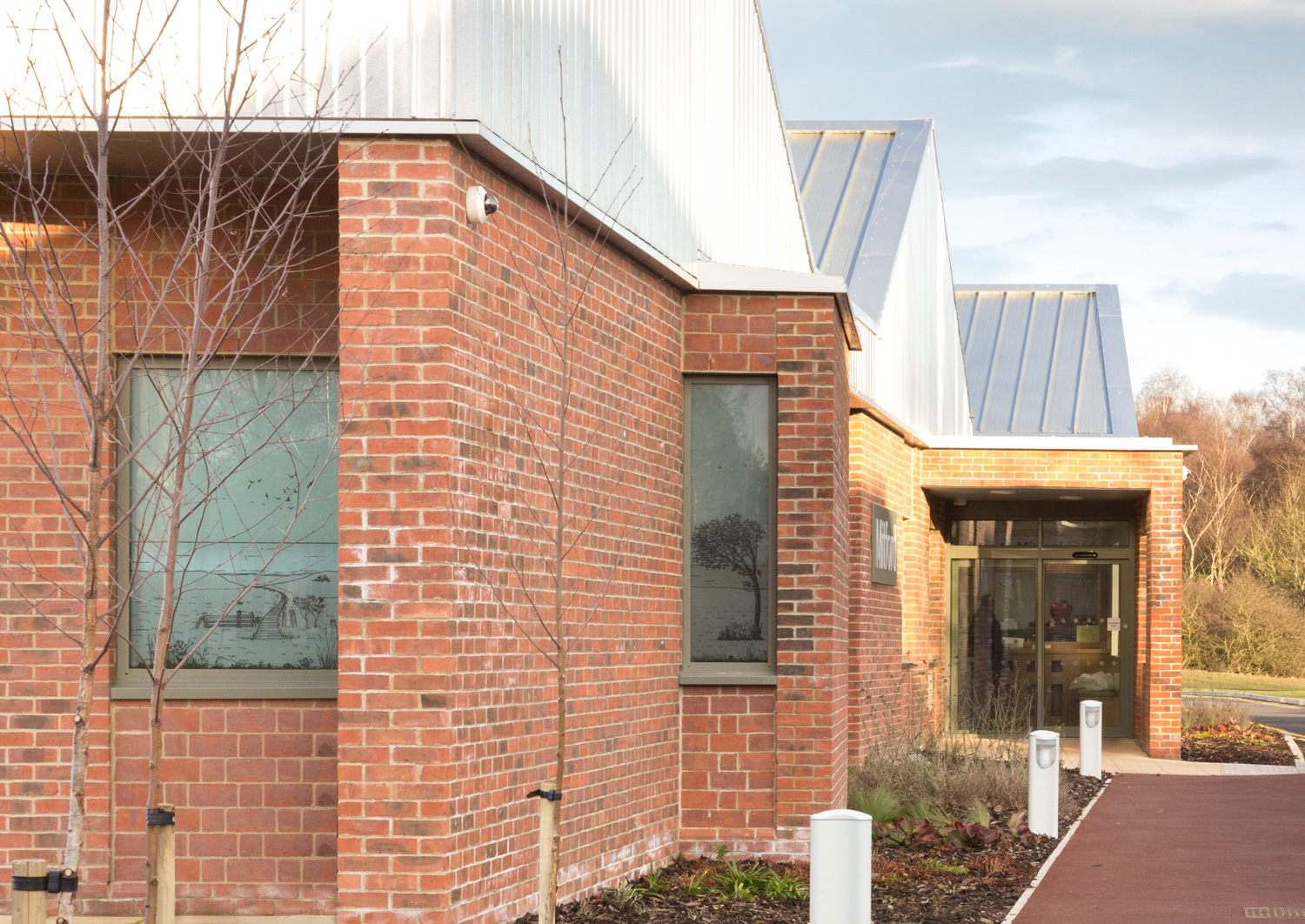
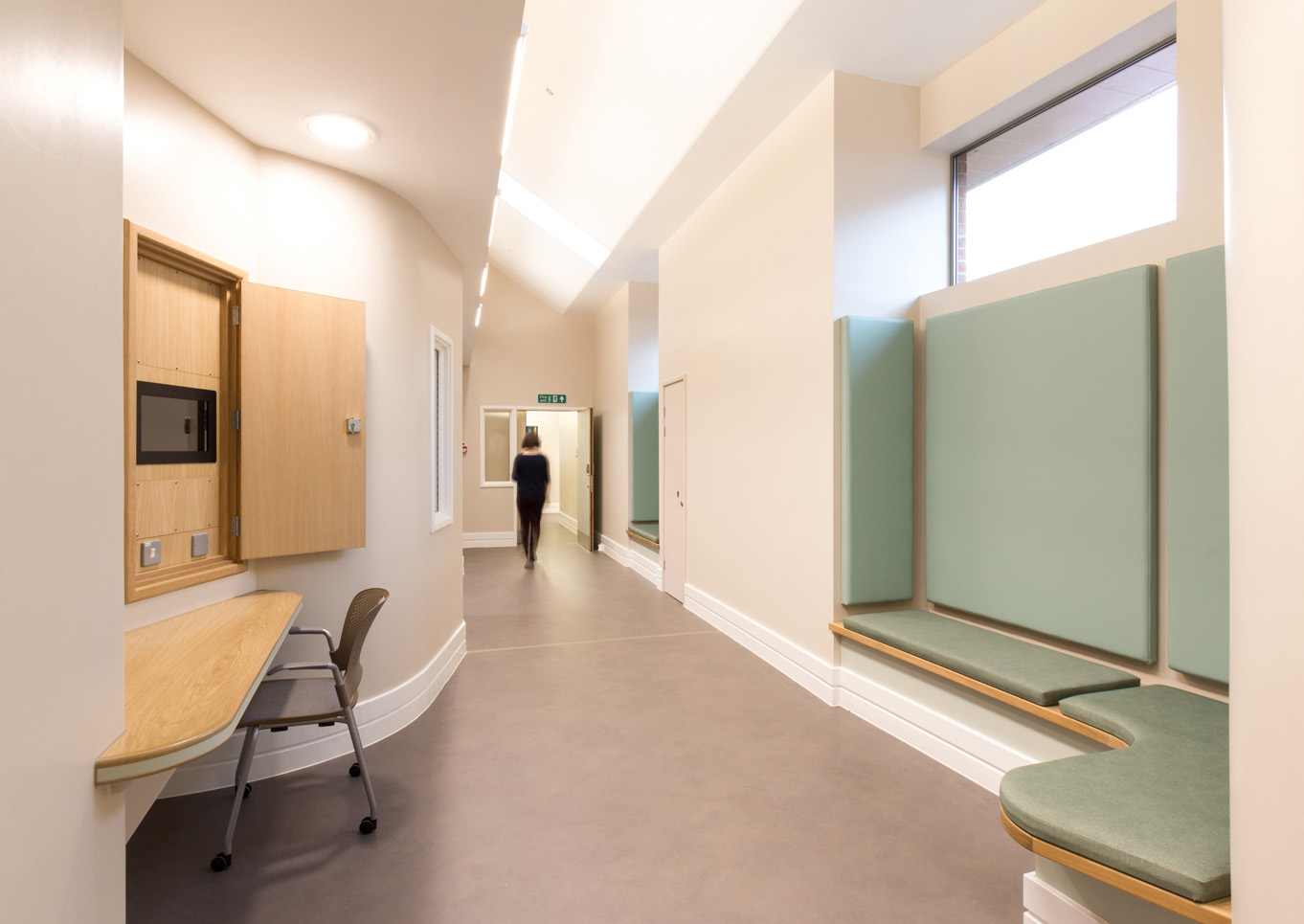
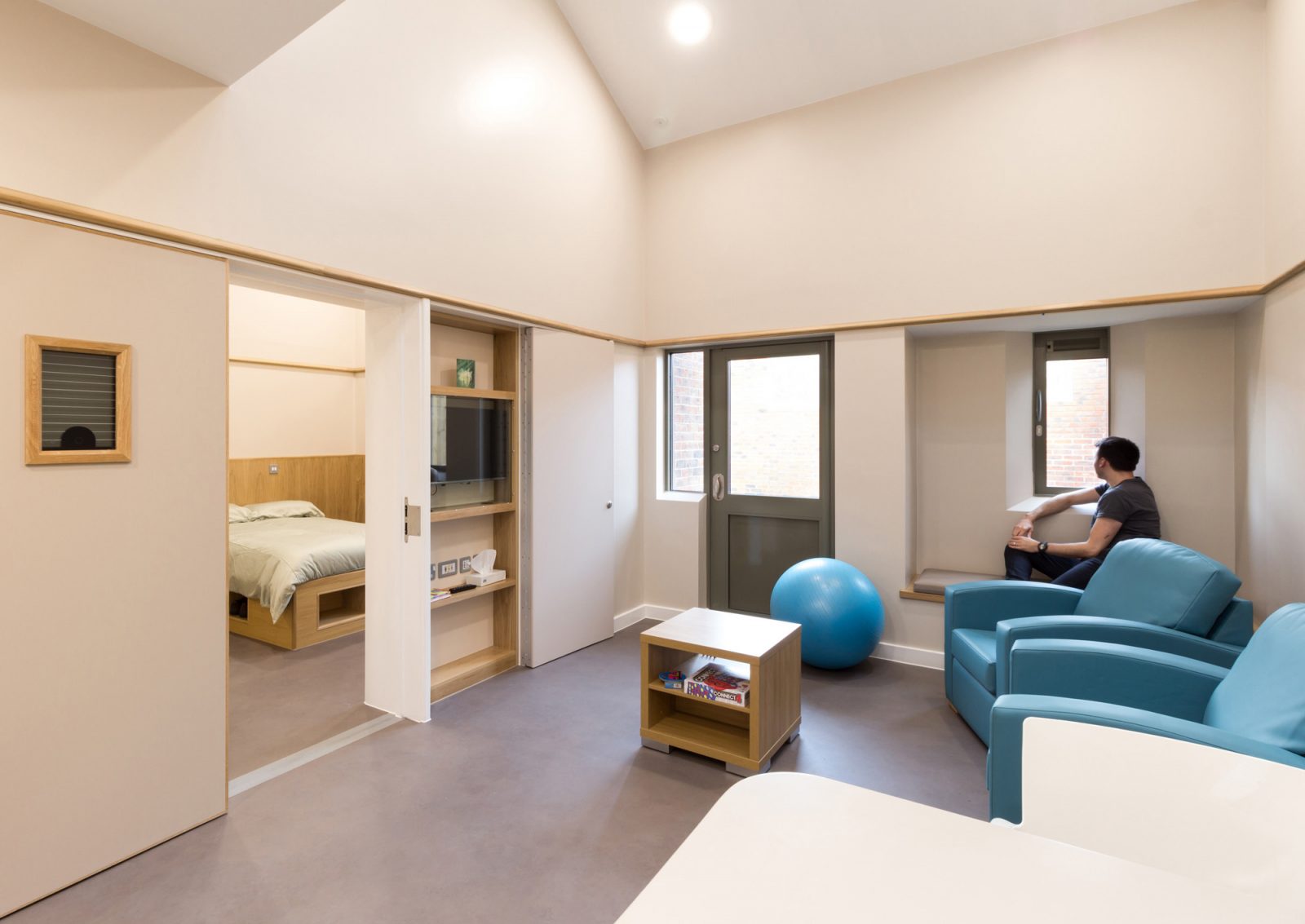
The design sensitively moderates the graduation from public to private space, addressing the vulnerability of each patient. The thresholds from each flat to the circulation space, and then progress from there to shared therapy spaces, are carefully considered to create an encouraging environment, whilst avoiding conflict with other patients. Wide, organically-shaped circulation spaces with ‘safe’ window seats, encourage movement but offer a measure of privacy. Each flat is oriented to the east for a comfortable internal environment, with direct access to the private gardens to support the therapeutic needs of individuals. Staff have reported a marked improvement in behaviour of patients. In the previous building there was one patient who used to live in self-imposed isolation and crawled everywhere. Within a week of moving into the new unit he was having a drink with staff in one of the offices.
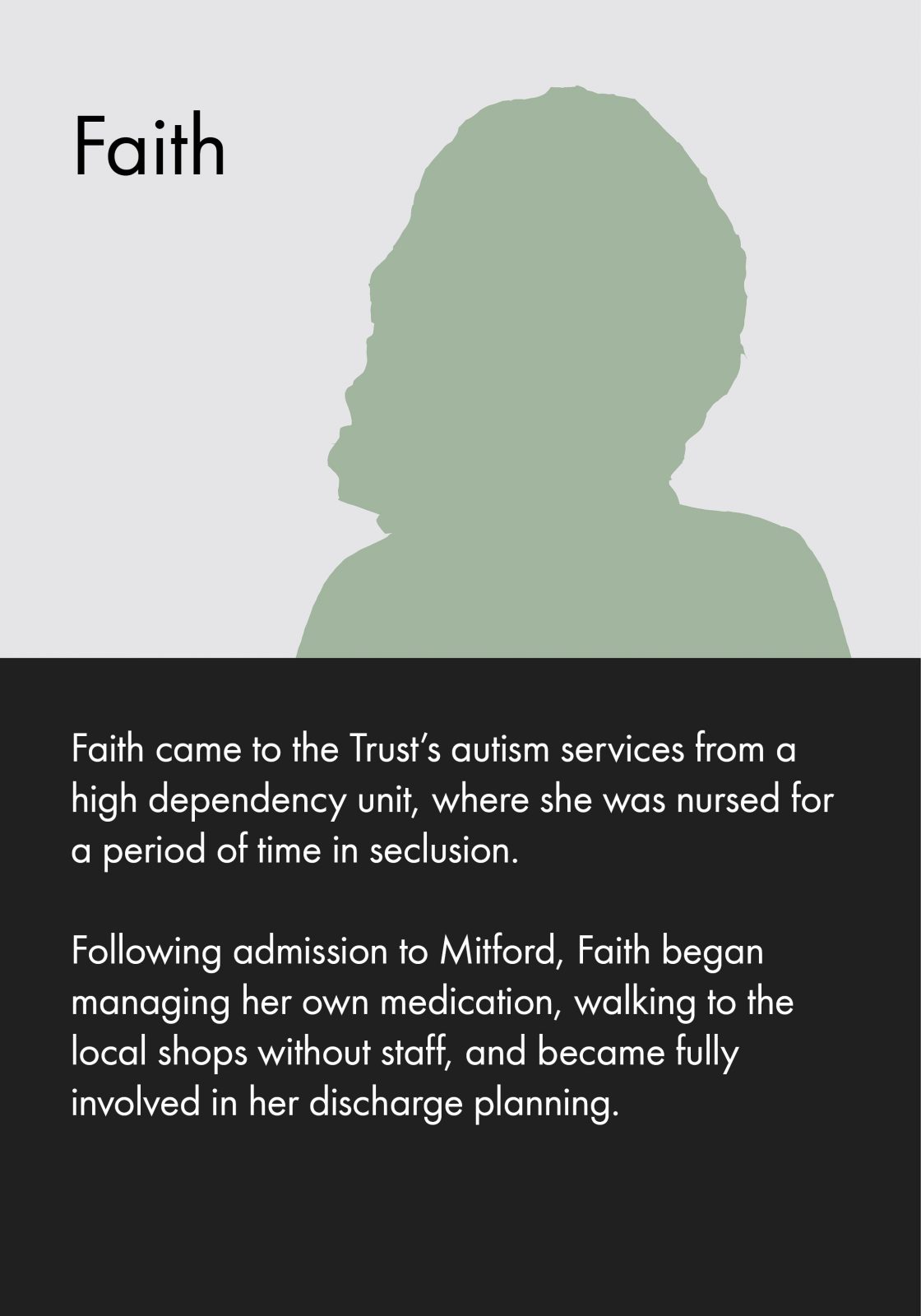
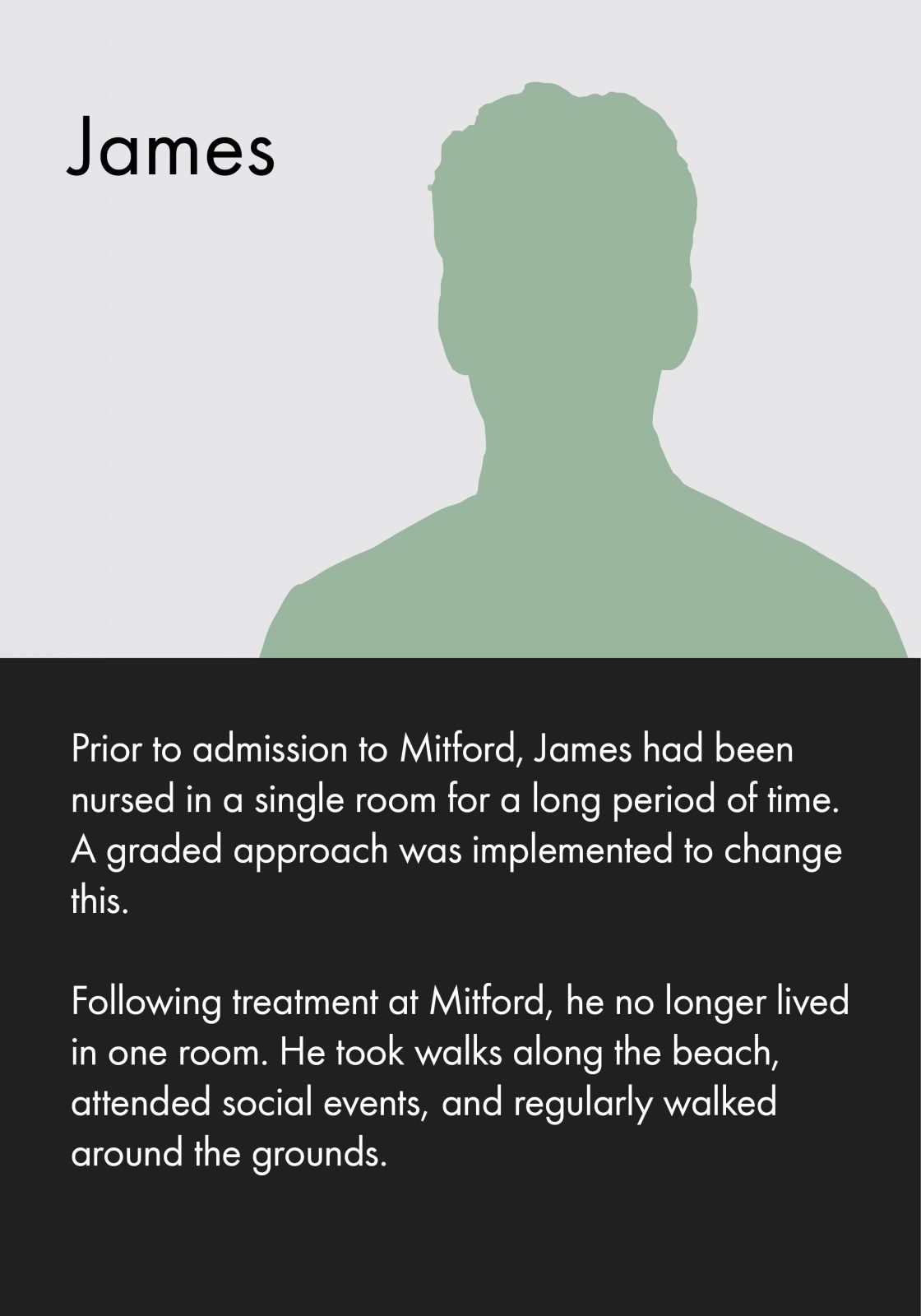
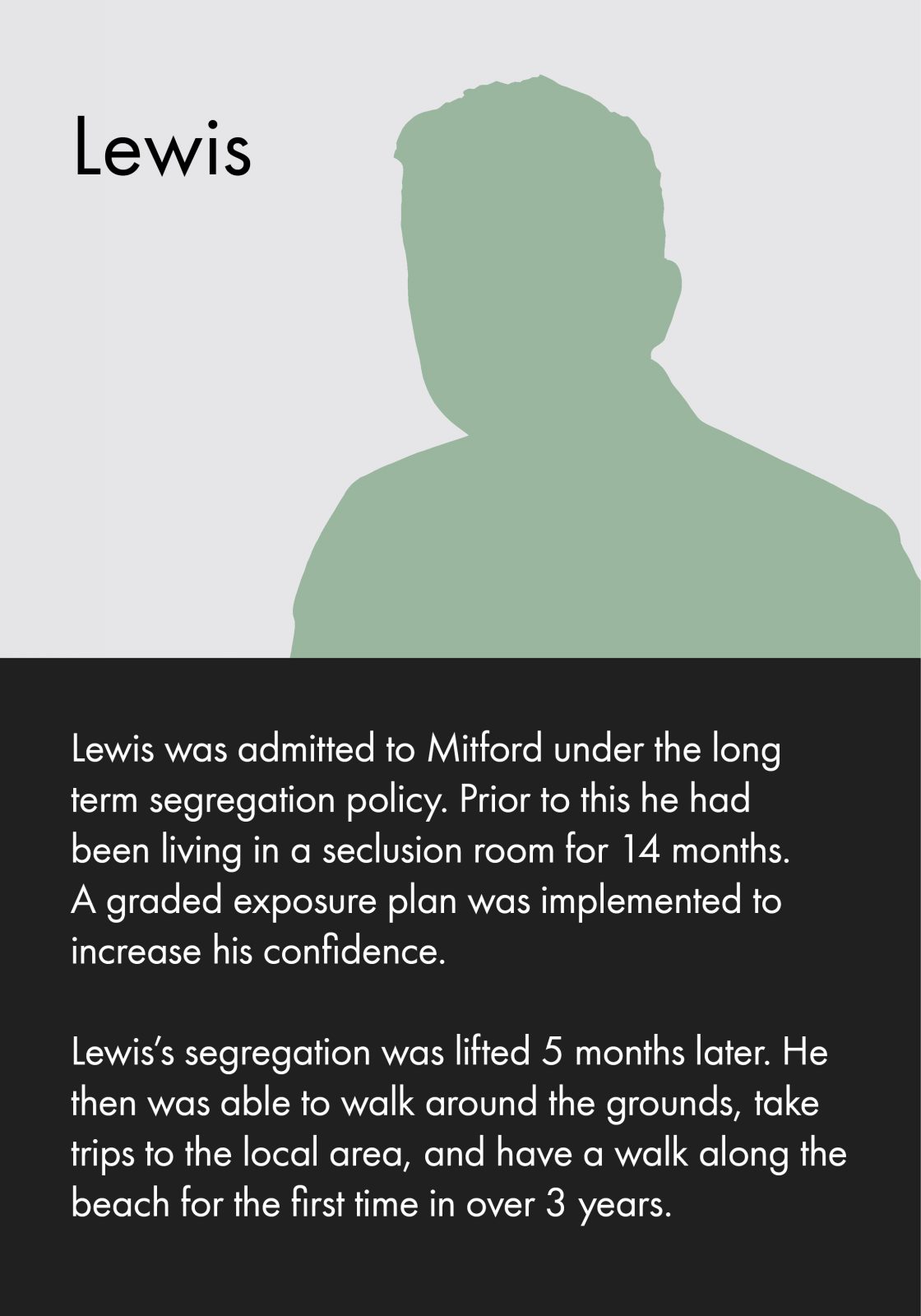
The process, right from the beginning, felt inclusive and that we were listened to. Design features were taken from suggestions made by ourselves and from the scientific literature, this led to what is in our opinion, an inclusive design incorporating many of the needs identified.
Location:
Surrey
Client:
Surrey and Borders Partnership NHS Foundation Trust
Value:
£2m
Completed:
2014
Size:
635 m²
Case Study: Oakwood Autism Unit
Oakwood Autism Unit provides long term residential care accommodation for adults with severe autistic spectrum disorders who require 24-hour support. The building creates a therapeutic environment which is specifically tailored to focus on the wellbeing of autistic residents, to enrich their lives, encourage positive behaviour and offer support to carers and NHS staff. The building form helps occupants’ transition between communal and private areas and gently encourages gradual social interaction.
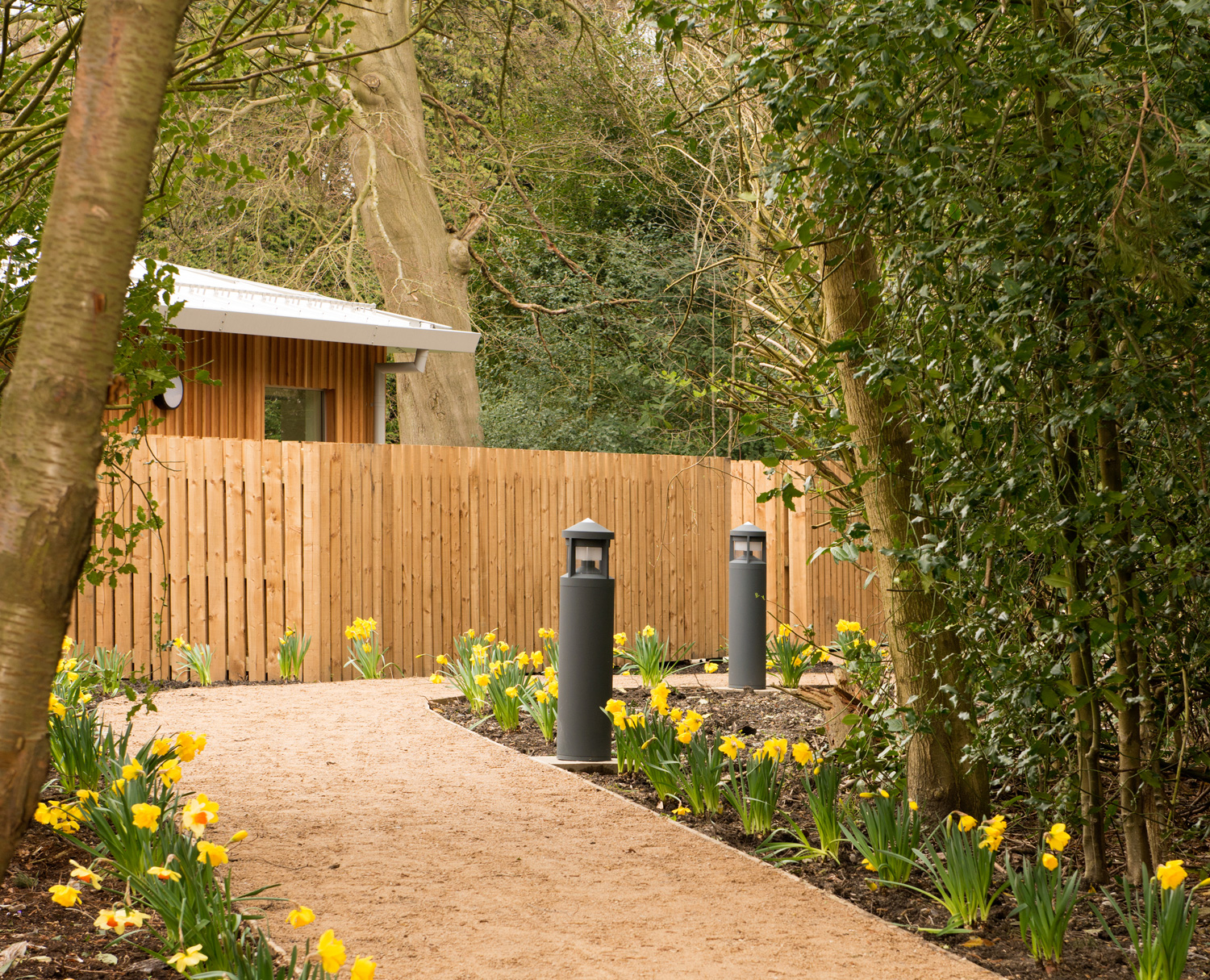
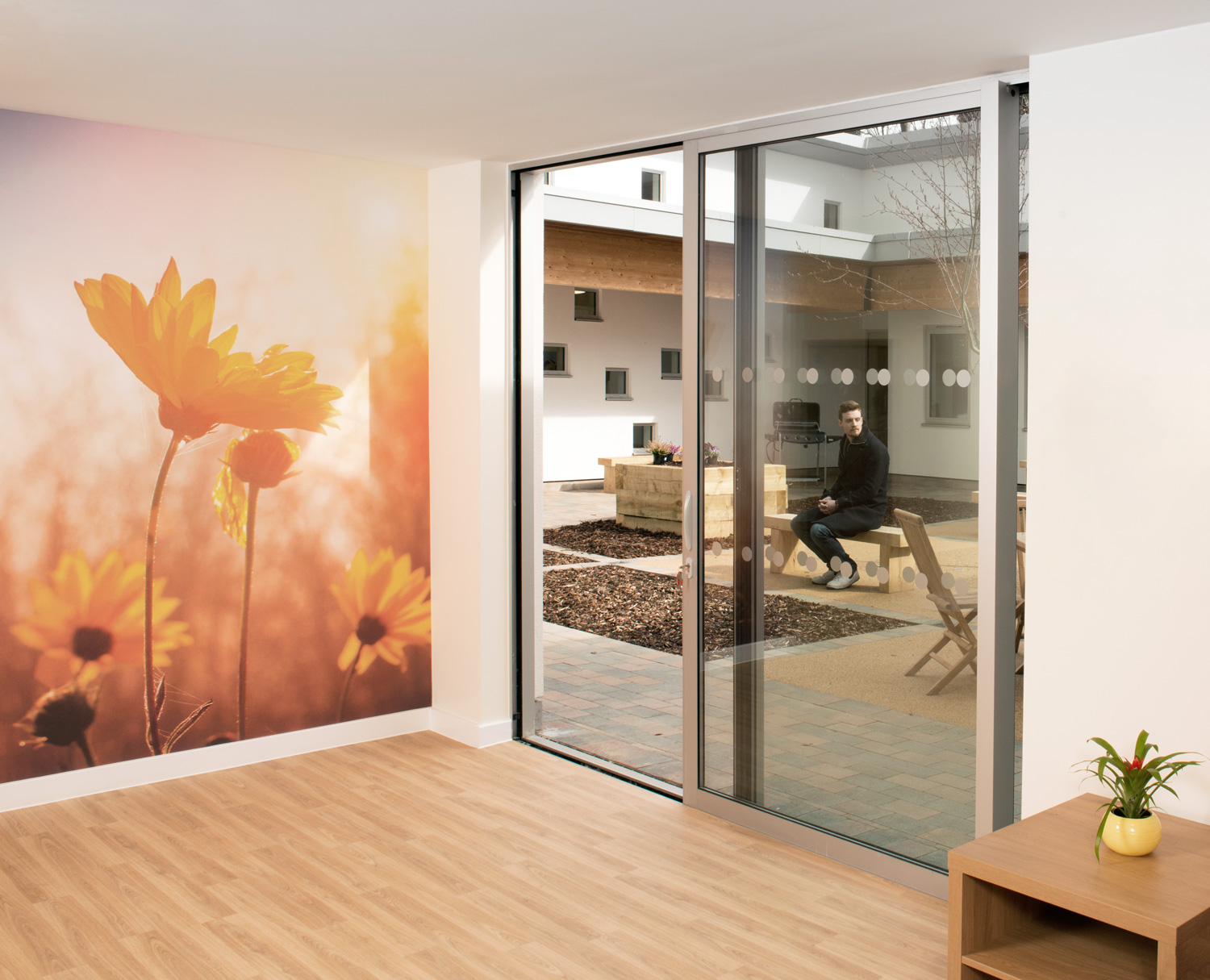
Wide thresholds outside bedrooms create niches for seats and sight lines provide long views into areas of communal activity and the landscape beyond, for residents who are more comfortable inhabiting a space at its periphery. The courtyard design provides inconspicuous security, where residents can enjoy autonomy and access outside space unescorted, while staff can monitor from a distance. Careful detailing helps to manage environmental stimulus, balancing robust materials and finishes with a domestic feel.
Project Team

